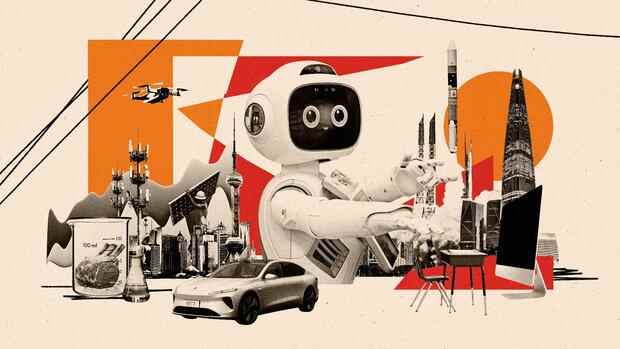Bangkok Singapore residents don’t even need extravagant taste to shell out a small fortune for their vehicle. For a modest Toyota Corolla, residents of the Southeast Asian city-state have to calculate the equivalent of almost 100,000 euros. In Germany they would get four cars for the same amount.
There is a plan behind it. The government is trying to dissuade people from driving as much as possible. The attempts at financial deterrence are becoming ever tougher: at the heart of the strategy is a registration document – the Certificate of Entitlement – that every car owner needs. Its number is strictly limited and is acquired in a bidding process.
The market price determined in this way reached a record high last week: For the first time, more than 110,000 Singapore dollars (78,000 euros) were due for the most valuable registration category. Just two years ago, this cost item was a comparatively harmless 35,000 Singapore dollars.
The enormous rise in prices now seems to mean that only the really wealthy can afford a car in the financial metropolis. At first glance, this may seem like a huge social injustice.
Top jobs of the day
Find the best jobs now and
be notified by email.
But it turns out that there are definitely advantages in no longer regarding a private vehicle as a de facto human right. In any case, the Singaporeans are spared the mega traffic jams during rush hour and harmful fine dust pollution as in other Asian cities.
42 billion euros for the infrastructure
And even the carless get to their destination. Because with the help of fleeced motorists, the city-state can afford to further expand its public transport system, which is already world-class.
Asia Technonomics
In Germany, there is still much broader and more detailed reporting on economic and innovation trends from the USA than from Asia. Wrong, we think. In our weekly Asia Techonomics column, we therefore want to bring you closer to the most exciting innovation and economic trends from the most dynamic region in the world.
According to the International Monetary Fund (IMF), the entire Asian region lost 1.6 percent of its economic output last year – far less than the USA or Europe. This decline will be far more than compensated for in the current year with expected growth of 7.3 percent. Asia is thus consolidating its economic importance for the world.
As Europe slides into the third Covid wave, infection and death numbers have been far better in Asia since the pandemic broke out. Last but not least, the corona crisis has shown that it is worth taking a closer look at Asia in order to learn for your own country.
We see that our readers are interested in exactly these topics. That’s why we want Asia Techonomics to take a look every week from now on at new technology ideas from Japan or China, billion-euro corporations that are stirring up the stock market in South Korea or Indonesia, tech investments in the Indian market, tests from cuddly robots to laboratory meat restaurants. Nicole Bastian wishes you a lot of fun!
In the past ten years, the country put 1,000 additional buses and 200 more trains into service. By 2030, the subway network, which currently consists of five lines, is to be expanded by three lines. The promise is that eight out of ten households in the country with a population of almost six million will then live less than ten minutes’ walk from a bus stop.
The equivalent of 42 billion euros will be invested in the railway infrastructure in the coming years. The government also subsidizes the operation of buses and trains with 1.4 billion euros per year in order to keep ticket costs comparatively low.
A 16-kilometer journey costs just 1.30 euros. A car trip to the city center can cost almost ten times as much during rush hour – because the city-state also charges drivers with a toll system that makes trips different in price depending on the time.
The city-state is working towards a car-free future.
(Photo: Bloomberg)
Undoubtedly, Singapore’s system cannot be easily transferred to other countries – as a densely populated city-state, the country has different requirements than most countries in Europe. But transport politicians can certainly learn from the example: Singapore shows that financial incentives work when it comes to relieving the streets of overcrowded inner cities – provided there are enough attractive alternatives to private transport.
Other parts of the Asia Technonomics series:
Surveys in the metropolis now clearly show that young people in particular are less and less interested in buying a car. You don’t want to afford the luxury, but you don’t have to.
This brings the vision of a completely car-free future closer. Singapore is already working on the next steps. The authorities want to turn the business district in the district of Jurong Lake into a model project in terms of sustainability, in which cars are at best of marginal importance: in the future, 85 percent of journeys are to be made on foot, by bicycle or by public transport.
One goes even further in the new development district of Tengah, which should be ready for occupancy in the coming year. Cars are completely banned from the center, the streets are underground. There are no protests against this, on the contrary: just a few days after the start of marketing, the housing projects in the district reported demand that more than doubled supply.
In the Asia Techonomics column, Nicole Bastian, Dana Heide, Sabine Gusbeth, Martin Kölling and Mathias Peer take turns writing about innovation and economic trends in the most dynamic region in the world.
More: A new unicorn every week – India’s start-up scene is so fast ahead of the competition
